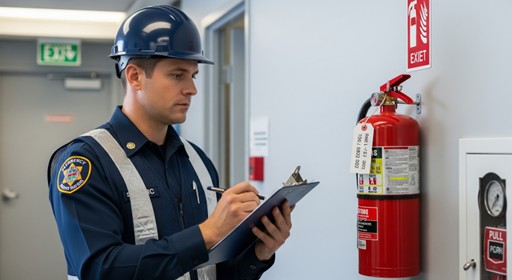Keeping Your Team Safe: More Than Just Fire Drills
Many businesses approach safety as a compliance exercise. They complete required assessments, file the documents, and check the regulatory box. This tick-the-box mentality creates a dangerous illusion of security. True safety isn’t about possessing a risk assessment; it’s about weaving preparedness into the very fabric of your daily operations. It’s a continuous journey that moves from identifying potential dangers to empowering every single employee with the knowledge and confidence to act correctly when it matters most.
The Role of Professional Expertise
Navigating the path from assessment to actual preparedness requires more than good intentions. This is where expert support becomes invaluable. Partnering with a professional provider of fire safety services ensures your strategy is built on expertise rather than guesswork. These specialists bring experience from countless environments and understand the nuances of different regulations. They transform the static findings of an assessment into a dynamic, living training curriculum tailored to your company’s specific operational reality and risks.
Understanding Your Vulnerabilities
Everything begins with a clear-eyed view of your unique environment. A thorough fire risk assessment is the essential foundation. This process involves far more than a quick walkthrough. It requires a meticulous examination of physical premises, work processes, and material storage. Competent assessors identify ignition sources, evaluate fuel loads, and analyze how people move through the space. They consider everything from electrical wiring and chemical storage to the layout of furniture and the functionality of alarm systems. This isn’t about creating a document to satisfy an inspector; it’s about building a comprehensive map of your specific vulnerabilities.
Translating Analysis into Actionable Training
A risk assessment left sitting in a folder is worthless. Its true value is only realized when its findings directly inform your training programs. If the assessment reveals a particular area as a high-risk zone, your evacuation drills should specifically practice clearing that area. If it identifies a specific type of equipment as a potential hazard, employees working with it need specialized instruction. This direct link between assessment and education ensures your training is relevant, targeted, and immensely more effective than generic safety videos.
Creating Muscle Memory for High-Stress Moments
During an emergency, people don’t rise to the occasion; they fall to the level of their training. Theoretical knowledge evaporates under pressure. This is why high-quality training focuses on building instinct through realistic repetition. Effective drills simulate the disorientation of smoke-filled corridors (using safe simulators) and the sound of actual alarms. They practice using fire extinguishers on live controlled fires and rehearse accounting for all personnel at assembly points. This practice builds the muscle memory needed to react calmly and correctly, transforming panic into procedure.
Fostering a Shared Sense of Responsibility
The ultimate goal of this integrated approach is cultural change. Safety ceases to be solely management’s responsibility and becomes a core value for every team member. Employees trained in this way become active participants. They are more likely to report potential hazards, such as a blocked exit or faulty equipment, because they understand the real-world consequences. They become your first line of defense, fostering an environment of shared vigilance where everyone feels invested in maintaining a secure workplace.
The Ripple Effect of Investment
Viewing safety as a strategic investment yields returns far beyond regulatory compliance. It demonstrates a profound commitment to your team’s well-being, which builds immense loyalty, trust, and morale. It reduces the potential for devastating operational downtime, legal liability, and reputational damage following an incident. A workforce that feels genuinely safe is more focused, productive, and engaged. Preparedness becomes a competitive advantage, proving that the safest workplaces are also the most successful ones.
The Journey Never Ends
A truly resilient safety culture is never finished. It requires continuous refinement. Regular reassessments identify new risks introduced by changes in operations, layout, or staffing. Training must be refreshed and updated to remain effective. Drills should be evaluated and improved upon. This cyclical process of plan, train, practice, and review ensures that your organization’s commitment to protection doesn’t stagnate but grows stronger over time, always ready to meet whatever challenge may arise.








